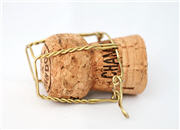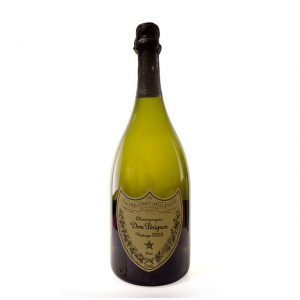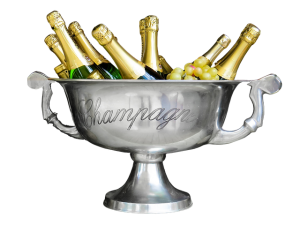Champagne Brands and How to Choose Between Them
Champagne is a wonderful drink that (literally) brings a sparkle to any special occasion, yet when it comes to choosing one brand or another, most people don’t know where to start. So here’s a quick guide to what makes all champagne brands different that will help you discover all sorts of new possibilities.

Champagne Brands – How to Choose Between Them
By J Halling
 Champagne is a wonderful drink that (literally) brings a sparkle to any special occasion, yet when it comes to choosing one brand or another most people don’t know where to start, so here’s a quick guide to what makes all champagne brands different that will help you discover all sorts of new possibilities.
Champagne is a wonderful drink that (literally) brings a sparkle to any special occasion, yet when it comes to choosing one brand or another most people don’t know where to start, so here’s a quick guide to what makes all champagne brands different that will help you discover all sorts of new possibilities.
When they buy champagne people tend to do one of three things:
- Stick with a brand that they have tried and liked before.
- Try someone’s else’s recommendation
- Buy what’s on the wine list in front of them
If you always drink the same brand you will probably never be disappointed, but you might well get a bit bored of the same old thing. If you try what someone else suggests you may, or may not, be pleasantly surprised but don’t forget that we all have different tastes so a champagne brand that another person thinks is the most wonderful thing they’ve ever tasted may just not be your cup of tea. Unfortunately when you take whatever is on the wine list you’re letting someone else make the choice for you. That’s the way a lot of the big brands get to be big. They are distributed everywhere and so, in the absence of a deliberate choice by a consumer, they get to sell an awful lot of bottles.
There is another way and all it takes is to learn a few of the basics about champagne. Here’s the first one – ask what grapes the champagne is made from. Sounds very basic doesn’t it. After all, when you buy a bottle of wine you’d usually want to know which grape varietal was used, wouldn’t you? Well you can and should do the same with champagne.
Champagne is made from three types of grape: a white grape – Chardonnay and two black grapes – Pinot Noir and Pinot Meunier (actually there are others but let’s not over-complicate things. If you know these three that will cover 99% of all champagne that is made.) If you’re wondering how you can make white champagne from black grapes don’t forget that when the grape is pressed, the juice is always colourless, even if the grape skin is black.
As a wine drinker you’ll know that different grape varieties have different characteristics and produce wine with different tastes and flavours; champagne is no exception. A champagne maker can blend the three grapes in whatever proportions he/she wants just so long as they get the final taste they are looking for. Consequently the combinations that are possible are virtually infinite and it’s this blending of the three different grapes that is one of the key things that makes one champagne brand different from another.
Chardonnay brings flavours and aromas that are often described as being floral, or like citrus fruit. When wine writers talk of elegance, freshness and finesse, more often than not they are talking about Chardonnay. Another way of describing Chardonnay which I find helpful is to use an analogy from music and to say that Chardonnay provides the ‘ Treble’ notes. Chardonnay-based champagnes then tend to be light, refreshing, clean and often quite dry. They are great as an aperitif and with delicate food such as sushi and shellfish.
Pinot Noir on the other hand brings fullness, power and body to the champagne. Typical aromas associated with Pinot Noir are red fruits such as strawberries and blackcurrants. Champagnes with a high proportion of Pinot Noir are a good match with full-flavoured food. If we use the same musical analogy as above, Pinot Noir provides the ‘ Bass ‘ notes in the composition. The third grape variety permitted in champagne is Pinot Meunier and whilst the other two are well-known outside the Champagne region, Pinot Meunier is almost unheard of elsewhere.
Used in a champagne Pinot Meunier can bring intense fruitiness with aromas of white-fleshed fruit such as apples or pears. It’s easy to drink and difficult to dislike. So before you buy your next bottle of champagne ask the retailer, or waiter, what the blend of grapes is and that will give you a good indication of the style. If you really want to impress then ask to know what the ‘assemblage’ is ( pronounced assomblarge). That’s the French word for blend.
If you’re about to say that this is not a fool-proof method, you’re right. This is a generalisation and the whole story is much more complicated, but it’s a useful start and a tip that can be helpful to everyone. Plus you don’t have to be a champagne expert to use it. To make things a little clearer, let’s take a few examples:
Ruinart makes champagnes that use a lot of Chardonnay so they are bright, light and fresh
Veuve Clicquot tends to have a lot more black grapes in it so it’s fuller and rounder in flavour and I would say ‘ heavier’
Bollinger is even more this way and is definitely a champagne for people who love big, bold tastes.
Moet & Chandon is more middle-of-the-road with roughly even amounts of all three grapes. It’s a classic taste that appeals to a very wide range of people; that’s one of the reasons why it’s the world’s best-selling champagne.
Canard Duchene is a brand with a high proportion of Pinot Meunier which make it fruity and easy to drink.
If you’d like lots more tips like these, come join our community of champagne lovers by going to www.madaboutbubbly.com and leaving your contact details now. Then follow my blog to learn even more about champagne brands and lots more.
Jiles Halling is a champagne specialist who has lived in the heart of the Champagne region for many years. Jiles has a wealth of knowledge about champagne and in particular the lesser-known independent grower champagnes. He’d love to hear from you and to help you with your champagnes questions.
Article Source: Champagne Brands – How to Choose Between Them
Sorry: we cannot find any of these products at this time.





